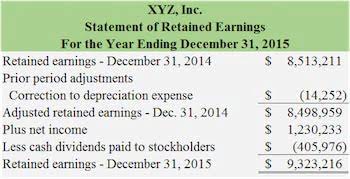
Accumulated amortization is a contra asset account that records the total amount of amortization expense that has been charged against an intangible asset. It is a measure of the decrease in value of an intangible asset over time due to usage or obsolescence. It is not common to report accumulated amortization as a separate line item on the balance sheet. More typical presentations are to include accumulated amortization in the accumulated depreciation line item, or to present intangible assets net of accumulated amortization on a single line item.

Journal Entry
Amortization is usually conducted on a straight-line basis over a 10-year period, as directed by the accounting standards. The amortization of loans is the process of paying down the debt over time in regular installment payments of interest and principal. An amortization schedule is a table or chart that outlines both loan and payment information for reducing a term loan (i.e., mortgage loan, personal loan, car loan, etc.). However, because the patent will expire in a few years, and amortization charge must be included in the company’s income statement each year. It’s important to keep in mind that amortization is usually calculated on a straight-line basis.
- When depreciated, the value of the asset is regarded as business expenses over its useful life, this is deducted from the tax return of the business.
- As a result, the outstanding loan or debt balance keeps reducing over time until it turns to zero.
- With a short expected duration (such as days or months), it is probably best and most efficient to expense the cost through the income statement, and not count the item as an asset at all.
- Amortization expense is directly linked to IFRS standards, especially in financial reporting.
- For example, a media company managing multiple intangible assets can use software to automate amortization schedules, ensuring accuracy and compliance.
Amortization expense vs. depreciation expense
It should be noted that if an intangible asset is deemed to have an indefinite life, then that asset is not amortized. When a corporation obtains an intangible asset that depreciates over time, it is important to reduce its value on its balance sheet over time. Account of amortization expense is to be debited, while accumulated amortization is to be credited. The amortization expense is recognized and recorded on the income statement, reducing the asset’s value on the balance sheet.
Considering this, how do I create an accumulated depreciation account in QuickBooks?
It is a contra asset account, which means it is subtracted from the original cost of the intangible asset to calculate its carrying value on the balance sheet. Calculating accumulated amortization is an important aspect of accounting for intangible assets. There are several methods that can be used to calculate accumulated amortization, including the straight-line method, units of production method, and sum-of-the-years’ digits method. Accumulated amortization is a useful mechanism to evaluate the Outsource Invoicing value of intangible assets and their usefulness to the firm. However, the point to note is that not all intangible assets can be amortized.

The allocation of costs over a specified period must be paid in full by the time of the maturity date or deadline. An amortization schedule is a table that shows the breakdown of each payment made towards a loan, including the principal and interest payments. It also shows the remaining balance of the loan after each payment is made. Adjustable-rate mortgages (ARMs) are a type of loan where the interest rate can change over what is accumulated amortization time. ARMs typically have lower initial interest rates than fixed-rate mortgages, but the interest rate can increase or decrease depending on market conditions.
Impact on Financial Statements

Loan amortization is paying off the debt of something over a specified period. A business that uses this option is building equity in the loaned asset while paying off the item at the same time. At the end of the amortized period, the borrower will own the asset outright. Revolving debt is a type of loan where the borrower has access to a line of credit that can be used and paid back repeatedly.
SOX Software
The assessment of net book value becomes more accurate as it considers the depreciated cost of intangible assets, providing a realistic portrayal of the company’s financial position. Accumulated amortization plays a pivotal role in clarifying the diminishing value of intangible assets over time. It reflects not just the passage of time but also the consumption of an asset’s economic benefits, providing stakeholders with a more accurate picture of a company’s net worth and financial health. A company spends $50,000 to purchase a software license, which will be amortized over a five-year period. The annual journal entry is a debit of $10,000 to the amortization expense account and a credit of $10,000 to the accumulated amortization account.
Determine the Useful Life of the Asset
- Running a business is no small feat and companies need both tangible and intangible assets to operate and drive profitability.
- Fixed assets are long-term assets that are not intended for resale, such as buildings, machinery, and equipment.
- Companies utilize depreciation methods like straight-line depreciation to allocate the cost of assets over their useful lives.
- However, like other assets, patents also lose their value over time as they can be obsolete, expire, etc.
- Amortization calculation refers to the process of determining the amount of each loan payment that goes towards the principal amount and the interest cost.
- An account is set up under intangibles, financing costs with a subaccount assigned with the loan number (suggest the last four digits) and the debit value of $30,070 is posted there.
In order to correctly amortize the patent, record a separate debit as “amortization expense” for the patent. Then, match it with a credit that matches with the bookkeeping debit for the patent recorded earlier.To determine the amount for the patent, simply take the amount required to purchase the patent. Then divide it by the number of years used for (in this case $100,000/yr). When an intangible asset is initially recorded on the balance sheet, it is reported at its cost. As each accounting period passes, the accumulated amortization account is incrementally increased by the amortization expense recorded on the income statement.

VARIANCE REPORT: Detailed Guide To Variance Reporting
The chosen amortization method also impacts financial reporting, affecting net income and balance sheet figures. Understanding the implications of amortization is essential for accurate and transparent financial statements. This can create challenges for investors seeking to accurately assess the value and performance of a company. When analyzing financial statements, the obscured impact of accumulated amortization can make it difficult to gauge the true asset values, potentially leading to misinformed investment decisions.
